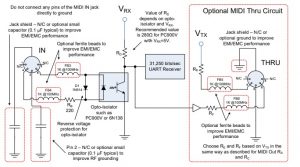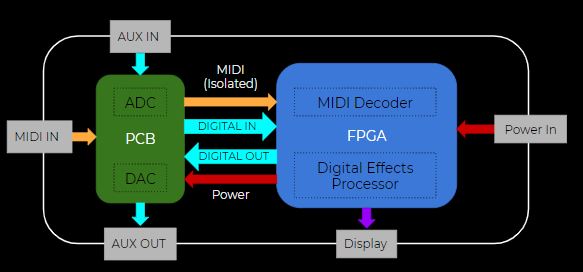This week I was involved in planning for the PCB BOM and research into a couple of the effects we plan on using. For the BOM I first found the official MIDI documention which included some good schematic diagrams that will aid in our PCB design.

After I looked at this for a while I began adding some of the relevant components to our BOM, which included MIDI Cables, Optoisolators, Diodes, and Ferrite Beads.
Outside of this I did some research into information about the actual MIDI protocol and how to implement a Chorus Effect.
I found some good documentation from CMU about the MIDI protocol at this link: https://www.cs.cmu.edu/~music/cmsip/readings/MIDI%20tutorial%20for%20programmers.html .
I learned about the different elements to a MIDI message. One interesting point is that for messages that continue on the same pitch for a long time, they will often omit the STATUS byte and just send a stream of DATA bytes to be more efficient.
For Chorus I learned that there are actually several different elements that you might consider including in a chorus effect. For example sometimes these effects include some sort of pitch shift or amplitude modulation. However since these are effects are separate effects that we plan on implementing on their own I determined that for a chorus effect it would be best to simply use multiple copies of the signal shifted between 0 and 25ms and added together. This is based on some testing in Audacity where I played around with it to determine what sounded good.





